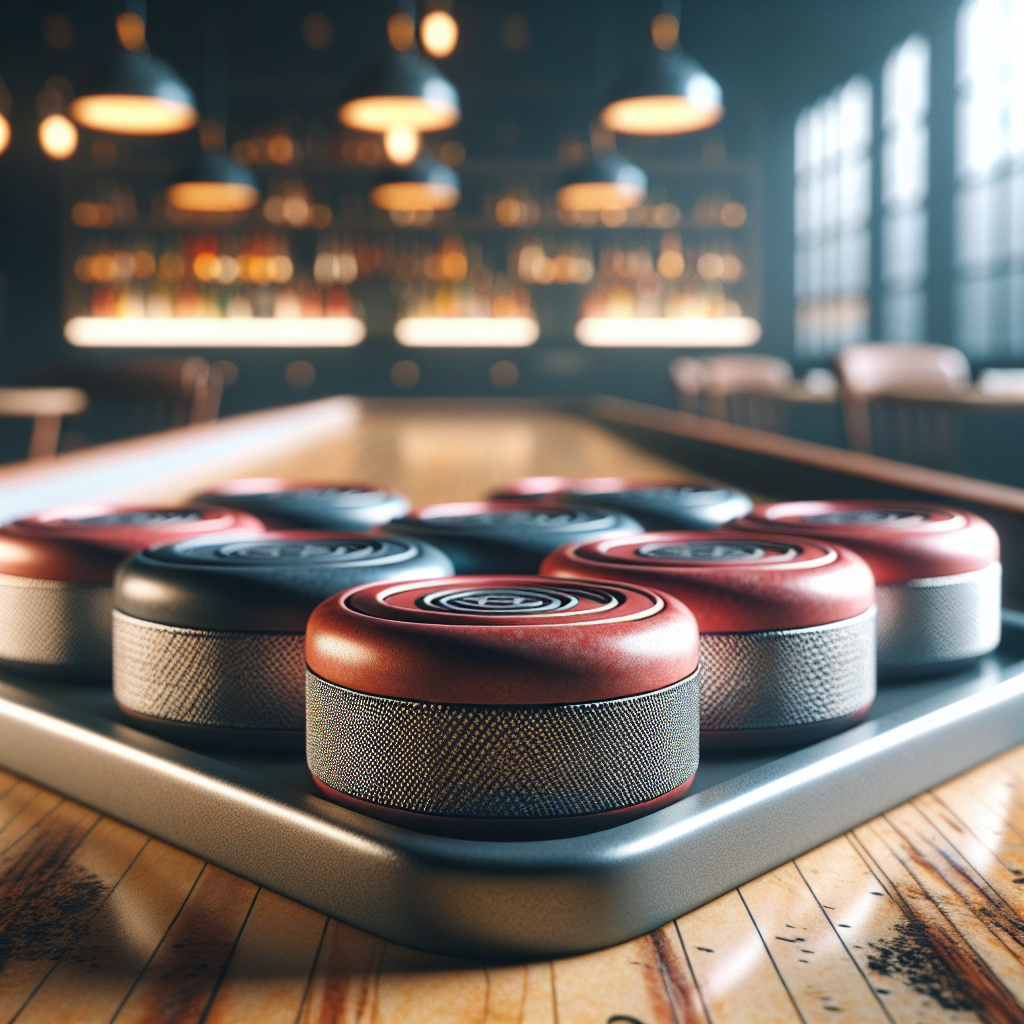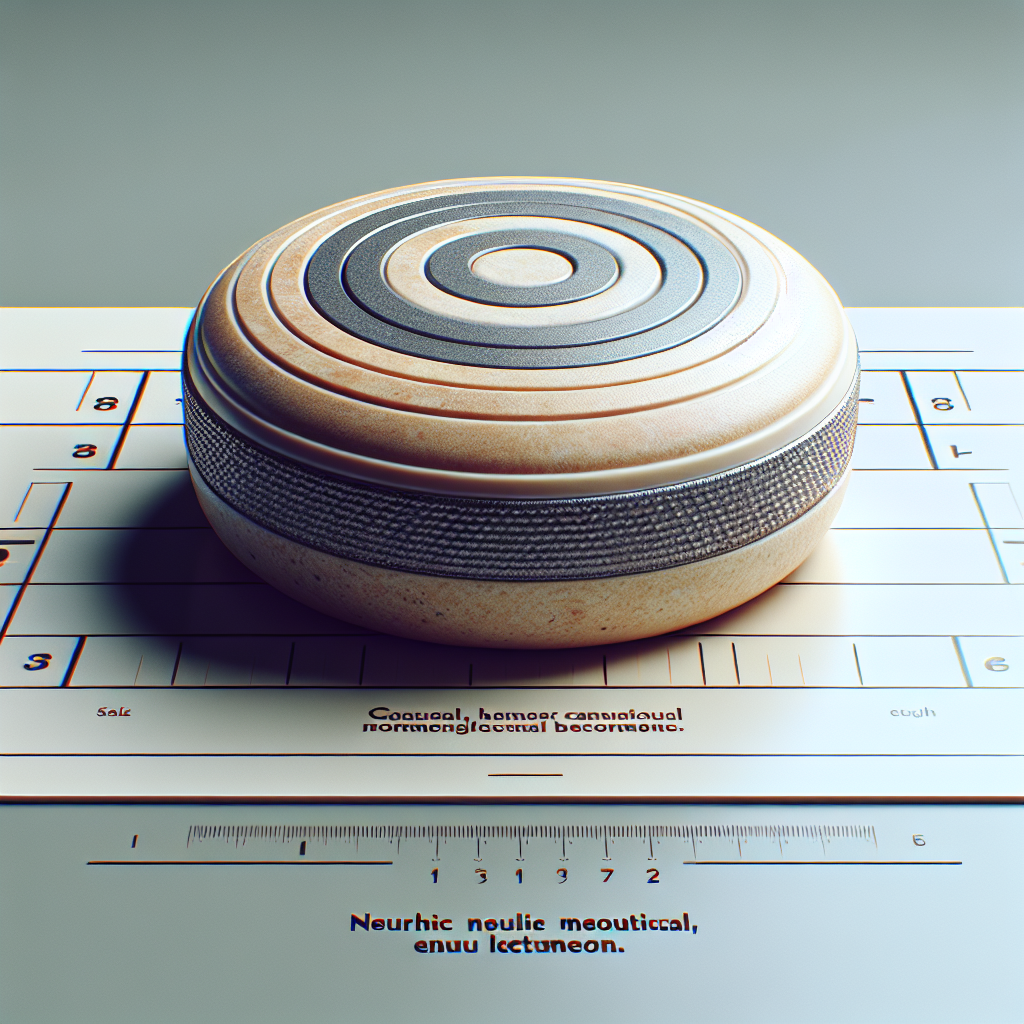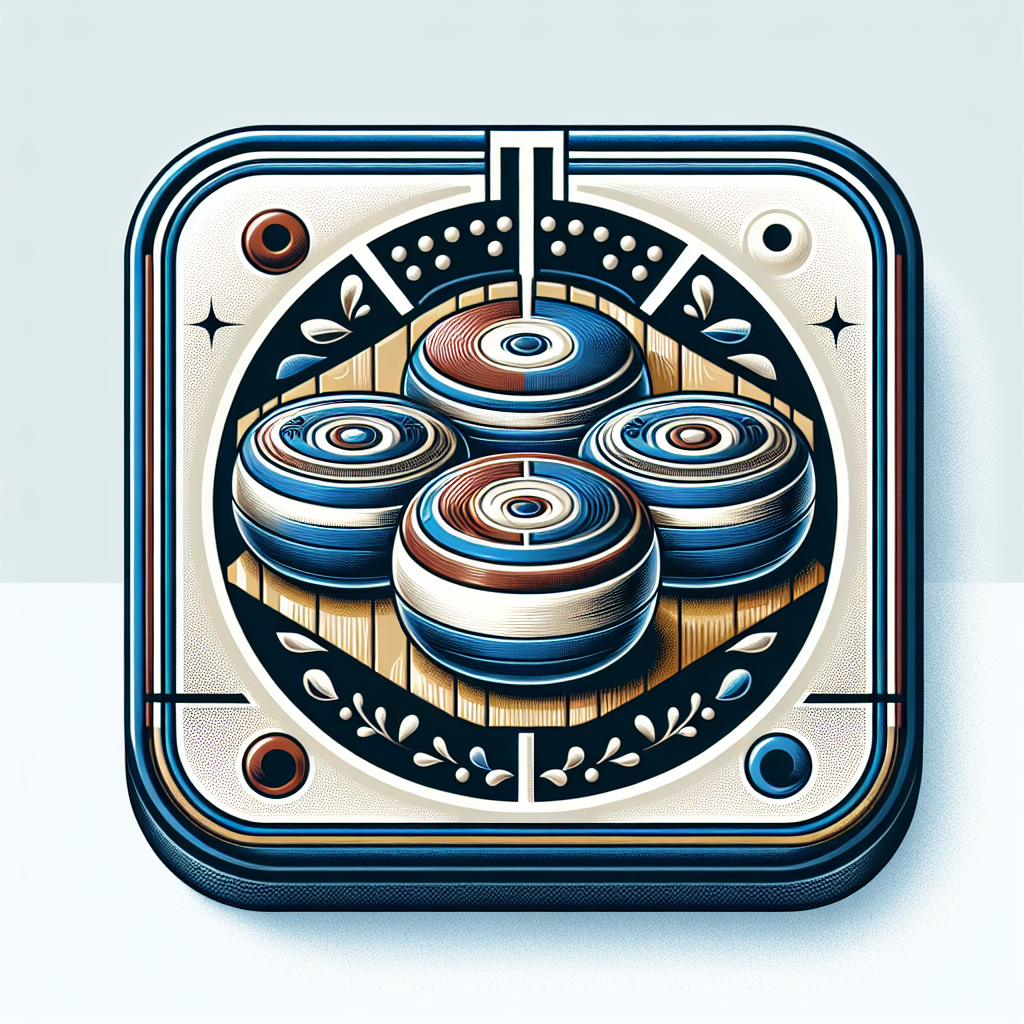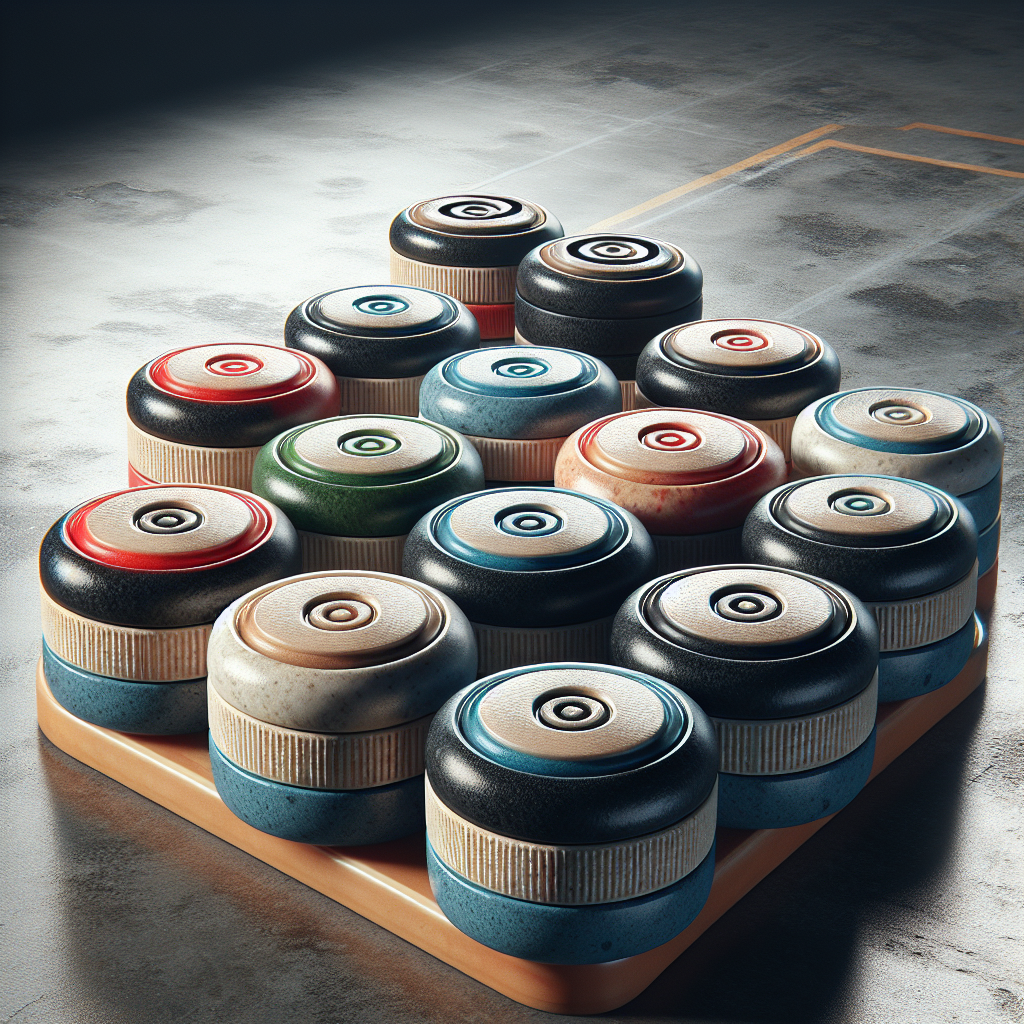Understanding Shuffleboard Pucks
To fully appreciate the game of bar shuffleboard, it’s important to understand the basics of shuffleboard pucks and the considerations regarding their size and weight.
Shuffleboard Puck Basics
Shuffleboard pucks, also known as weights or discs, are the essential components of the game. They are designed to glide smoothly across the shuffleboard table, propelled by players in their quest for victory. These pucks are typically made from materials such as wood or plastic, each with its own unique characteristics and advantages.
The size and weight of shuffleboard pucks play a crucial role in the game, affecting the speed, control, and overall gameplay experience. Different sizes and weights are utilized based on the length of the shuffleboard table. For example, medium-sized pucks are used for tables that are 12 feet or shorter, while larger pucks are preferred for tables that are 14 feet or longer.
Size and Weight Considerations
The dimensions of shuffleboard pucks are specified to ensure fair and consistent gameplay. According to Shuffleboard Federation, the official tournament weight (puck) for shuffleboard should be 2.3125 inches wide and 0.75 inches in height, with a margin of error of +/- 0.05 inches. The total mass of a weight should weigh a minimum of 310 grams and have a maximum mass of 355 grams, with a margin of error of +/- 1.0 gram.
These size and weight requirements provide a standardized playing experience across tournaments, ensuring that all players have equal opportunities to showcase their skills. It’s important to note that players may use their own weights, but all weights must have red or blue caps in accordance with tournament regulations.
When selecting shuffleboard pucks for casual play or personal use, it’s crucial to consider the size and weight recommendations based on the length of the shuffleboard table. The weight of the pucks can affect their trajectory and distance traveled on the table, with heavier pucks generally able to travel farther. Customization is often possible with some pucks, allowing players to adjust the weight by inserting a coin under the cap and screwing it back on.
The following table provides an overview of the size and weight recommendations for shuffleboard pucks based on table length:
| Table Length | Puck Size | Puck Weight |
|---|---|---|
| Up to 12 feet | 2 1/8 inches | Varies (Medium) |
| 14 feet or longer | 2 5/16 inches | Varies (Large) |
Table length recommendations courtesy of Shuffleboard.net and McClure Tables.
Understanding the basics of shuffleboard pucks, including their size and weight considerations, is crucial for both casual and tournament play. By selecting the appropriate pucks and adhering to regulations, players can enhance their shuffleboard experience and engage in competitive gameplay with precision and skill.
Types of Shuffleboard Pucks
When it comes to shuffleboard pucks, there are various types available, each designed to enhance gameplay and cater to different player preferences. In this section, we will explore two key aspects of shuffleboard pucks: indentation and grip, as well as customization and color options.
Indentation and Grip
Shuffleboard weights are often indented on the top to provide better grip and thumb placement when sliding them across the playing surface. The indentation styles can vary, catering to players of varying skill levels. Some pucks feature a deep indentation, allowing for a more secure grip and greater control during gameplay. Others may have a shallower or more subtle indentation, providing a different feel and experience on the shuffleboard table.
The choice of indentation style ultimately depends on personal preference and playing style. Players who prefer a more tactile grip might opt for pucks with deeper indentations, while those who prefer a smoother glide might prefer pucks with shallower indentations. Experimenting with different indentation styles can help players find the one that suits them best and enhances their gameplay.
Customization and Color Options
Shuffleboard pucks have evolved over time, from coins used in a game called shove-groat in 15th century England to the sleek and balanced pucks made of stainless steel with colored plastic tops that are used today (McClure Tables). In modern shuffleboard, players have the option to customize their sets with pucks in their preferred colors, adding a personal touch to their game.
Red and blue are the most popular colors for shuffleboard weight tops, as they provide clear visibility and allow for easy identification of teams or players. However, some manufacturers offer a range of other colors to choose from, allowing players to create a visually appealing and personalized set of pucks. Customization options can also extend to engravings or logos on the pucks, further enhancing the uniqueness of the set.
By selecting pucks with their preferred indentation style and colors, players can not only improve their grip and control but also add a touch of personalization to their shuffleboard experience. Whether playing in a casual setting or a competitive tournament, the right shuffleboard pucks can enhance gameplay and contribute to an enjoyable and engaging experience.
Shuffleboard Pucks in Gameplay
When it comes to playing shuffleboard, the choice of shuffleboard pucks can significantly impact the gameplay. Understanding the differences between pucks used in tournament play versus casual play, as well as considering their material and construction, is essential for an enjoyable and competitive experience.
Tournament vs. Casual Play
In shuffleboard, there are different standards for tournament play and casual play. In official tournament games, specific regulations govern the size and weight of the shuffleboard table and pucks. Regulation-sized tables, typically measuring 22 feet long and 20 inches wide, require the use of large, regulation-sized pucks (Shuffleboard.net). On the other hand, casual play allows for more flexibility in table and puck sizes, providing players with a wider range of options.
Puck Material and Construction
Shuffleboard pucks are available in various materials, each offering its own advantages and characteristics. Stainless steel and chrome-plated pucks are commonly used in tournament play due to their durability and consistent performance (McClure Tables). These pucks typically have a solid base and are designed with removable caps that allow for customization or weight adjustment.
For casual play, there is a broader range of options available, including wooden and plastic pucks. Wooden pucks offer a traditional feel and are often used in recreational settings. Plastic pucks, on the other hand, are lightweight and provide a smoother glide across the shuffleboard table. These materials cater to different preferences and playing styles, allowing players to choose what suits them best.
When it comes to the specifications of shuffleboard pucks, tournament regulations outline specific requirements. The official tournament weight (puck) for shuffleboard must be 2.3125 inches wide and 0.75 inches in height, with a margin of error of 0.05 inches. The total mass of a puck should weigh a minimum of 310 grams and have a maximum mass of 355 grams, with a margin of error of +/- 1.0 gram. It is important to note that all tournament pucks must have red or blue caps (Shuffleboard Federation).
For casual play, there is more flexibility in puck size and weight, allowing players to choose options that align with their preferences and playing style. It’s worth considering that heavier pucks have the potential to travel farther and be more effective on the shuffleboard table. Some players even add weight to lighter pucks by inserting a coin under the cap and screwing it back on (McClure Tables).
By understanding the distinctions between pucks used in tournament play versus casual play, as well as the materials and construction options available, shuffleboard enthusiasts can select the pucks that best suit their preferences and level of gameplay. Whether competing in a tournament or engaging in casual play, the choice of shuffleboard pucks can greatly impact the overall experience and enjoyment of the game.
Shuffleboard Puck Strategy
A successful game of bar shuffleboard involves not only choosing the right shuffleboard pucks, but also employing effective strategies. In this section, we will explore two essential aspects of shuffleboard puck strategy: puck handling techniques and advanced puck strategies.
Puck Handling Techniques
To excel in bar shuffleboard, players must master various puck handling techniques. Here are a few key techniques that can improve your gameplay:
-
Applying English: Applying English, or sidespin, to shuffleboard pucks can help players control shots, especially if they tend to use too much power. By using backspin with the thumb and forefinger, players can prevent their pucks from falling over. It is essential to experiment with the amount of spin applied to avoid slowing down the puck excessively (Shuffleboard.net).
-
Side-wheeling: Side-wheeling is a shooting technique in shuffleboard where players shoot from the side of the table and use their third and fourth fingers to guide the puck. This method allows for controlled shots that are risky for the opponent to knock off. Side-wheeling is particularly useful for keeping pucks close to the sides without falling over, making it effective on warped tables as well (Shuffleboard.net).
Remember, shuffleboard strategies should be dynamic and adaptable to different tables and opponents. Practice using different techniques and experiment with varying levels of power and spin to enhance your control and precision in the game.
Advanced Puck Strategies
In addition to mastering puck handling techniques, advanced strategies can significantly impact your shuffleboard game. Here are a couple of advanced puck strategies to consider:
-
Angles: Angles play a significant role in shuffleboard, allowing players to score against and sabotage opponents. Utilizing side rails and ricocheting pucks off them can help in bypassing or knocking off pucks. Mastering angles provides flexibility in shooting pucks and can lead to chain reactions for strategic plays (HB Home Furnishings).
-
Protecting Pucks: Protecting pucks is a key strategy in shuffleboard to prevent opponents from easily bumping them off the edge of the court. Mastering the technique of blocking by positioning pucks strategically can safeguard high-scoring pucks and potentially score additional points while impeding opponents (HB Home Furnishings).
By incorporating these advanced strategies into your gameplay, you can gain a competitive edge and increase your chances of victory. Remember, shuffleboard is a game of skill and strategy, so practice and experience will ultimately help refine your techniques.
Stay tuned as we explore shuffleboard puck regulations and how to enhance your shuffleboard experience with various shuffleboard puck accessories.
Shuffleboard Puck Regulations
When it comes to bar shuffleboard, adhering to shuffleboard puck regulations is essential to ensure fair play and maintain a consistent game experience. These regulations cover the weight and size requirements of the pucks, as well as rules regarding inspection and disqualification.
Weight and Size Requirements
According to the Shuffleboard Federation, the official tournament weight for shuffleboard pucks is 2.3125 inches wide and 0.75 inches in height, with a margin of error of ±0.05 inches. The total mass of a puck must weigh a minimum of 310 grams and have a maximum mass of 355 grams, with a margin of error of ±1.0 gram.
For regulation play, tournament specifications for shuffleboard pucks typically range between 310 grams and 350 grams, as noted by McClure Tables. These pucks are often made from stainless steel or have chrome-plated bases, with caps that can be screwed on and off for customization or to adjust the weight. To increase the weight of lighter pucks, players can insert a coin under the cap and securely screw it back on.
Inspection and Disqualification Rules
To ensure fair gameplay, shuffleboard pucks must meet certain criteria and be in good condition. The Shuffleboard Federation states that players are allowed to modify the overall mass of a puck by adding or removing mass from the interior of a cap. However, any added mass must be self-contained and secure within the cap.
It is important to note that the use of magnets inside pucks or magnetized pucks is strictly prohibited. Furthermore, all pucks must be in good condition, without rust, chipped finish, or unusual wear that could damage the playing surface or an opponent’s pucks.
During tournaments or official gameplay, shuffleboard pucks are subject to inspection by tournament officials at all times. Pucks that do not meet the regulations or show signs of disqualification may be disqualified at the discretion of the Tournament Director.
By following these shuffleboard puck regulations, players can ensure a level playing field and fair competition. It is important to familiarize yourself with the specific regulations of the establishment or tournament you are participating in to avoid any unnecessary disqualifications.
Enhancing Shuffleboard Experience
To elevate the enjoyment of the bar shuffleboard experience, there are various accessories and innovations available. These additions can enhance gameplay, provide customization options, and contribute to the evolution of shuffleboard pucks.
Shuffleboard Puck Accessories
To enhance your shuffleboard game, there are several accessories worth considering. These accessories can improve gameplay, protect the shuffleboard table, and provide convenience during play. Some popular shuffleboard puck accessories include:
- Puck Wax: Applying wax to the shuffleboard table creates a smooth and fast playing surface, allowing the pucks to glide effortlessly. Wax can be applied periodically to ensure optimal gameplay. Different types of wax are available, each with its own characteristics and preferences.
- Brush: A shuffleboard brush is used to remove excess wax and debris from the playing surface, ensuring a consistent and clean playing experience. Regular brushing maintains the quality of the table and keeps the playing surface in top condition.
- Scoreboard: A scoreboard is essential for keeping track of scores during shuffleboard games. Scoreboards can be wall-mounted or freestanding, and they come in various designs and sizes to accommodate different preferences.
- Puck Case: A case or bag for shuffleboard pucks provides a convenient way to store and transport your pucks. It helps protect the pucks from damage and keeps them organized when not in use.
These accessories can enhance both the practical and aesthetic aspects of your shuffleboard game, making it more enjoyable for players.
Evolution of Shuffleboard Pucks
Over time, shuffleboard pucks have undergone changes and improvements to enhance gameplay and meet the needs of players. The evolution of shuffleboard pucks has introduced different materials, designs, and customization options.
Traditionally, shuffleboard pucks were made from wood. Wooden pucks are still used today and are favored by some players for their classic feel and aesthetic appeal. However, advancements in technology and materials have led to the development of pucks made from plastic and other synthetic materials. These materials offer greater durability, consistency, and precision in gameplay.
Furthermore, shuffleboard pucks have evolved in terms of design and customization. Pucks now come in a range of colors, allowing players to personalize their gameplay experience. Different color options make it easier to distinguish between teams or players during a game.
To meet specific size and weight requirements, professional shuffleboard pucks are carefully crafted and regulated. The official tournament weight (puck) for shuffleboard has specific dimensions and weight restrictions, ensuring fair and standardized gameplay (Shuffleboard Federation). The weights typically range between 310 grams and 350 grams, with a margin of error of +/- 1.0 gram (McClure Tables).
The evolution of shuffleboard pucks continues as manufacturers explore new materials, designs, and customization options. These advancements contribute to an improved shuffleboard experience for players, both in casual play and professional tournaments.
By utilizing shuffleboard puck accessories and embracing the evolution of shuffleboard pucks, players can enhance their enjoyment of the game and elevate their overall shuffleboard experience. Whether it’s optimizing gameplay with wax and brushes or customizing pucks to match personal preferences, these enhancements contribute to the timeless appeal of bar shuffleboard.








